Energizing Your Body for the Chill: A Winter Workouts Warm-Up Guide
Engaging in winter workouts requires extra care, especially when preparing your body for movement. Cold temperatures can leave your muscles stiff and more susceptible to strains or injuries. To counter this, a dynamic warm-up is crucial. Unlike static stretches, which involve holding a position and may increase the risk of injury, dynamic movements loosen muscles, boost flexibility, and improve blood circulation. Dr. Adam Tenforde from Harvard’s Spaulding Rehabilitation Network recommends the following pre-exercise warm-up routine, perfect for winter workouts:
Arm Circles:
Extend your arms sideways at shoulder height, palms down. Start with small circles and gradually make them larger until you complete 20. Reverse the motion, going from large to small, for another 20.
Arm Swings:
Stand with feet hip-width apart and swing your arms in unison to the right, then to the left, twisting from the waist—alternate sides for 10 swings total.
High Knee March:
Lift your right knee high toward your chest, using a wall or your hands for balance if needed. Lower it and repeat with the left knee. Continue until you’ve raised each leg 5 to 10 times.
Lunges:
Step forward with your right leg, lowering your body until both knees form 90° angles. Push back to the starting position and repeat on the left side. Do 5 to 10 repetitions for each leg.
Layer Up and Head Outdoors: How to Brave Winter Workouts Safely
Outdoor winter workouts can be refreshing and invigorating, but preparation is essential for safety and comfort. Dr. Tenforde advises approaching cold-weather exercise with the same caution as summer training. Here’s how to enjoy your winter workouts while staying warm and protected:
Dress in Layers for Maximum Comfort: Wear clothing that allows you to regulate your body temperature easily. Start with a moisture-wicking base layer, like polypropylene, to keep sweat away from your skin. Add an insulating layer such as fleece or wool to retain heat, and top it with a waterproof, breathable jacket. Avoid cotton, as it absorbs moisture and can leave you feeling colder during winter workouts.
Shield Vulnerable Areas: Your extremities – head, hands, and feet – are at higher risk of cold exposure as blood flow prioritizes warming your core. Wool-lined gloves, thick socks, and a snug wool cap can make a big difference. Don’t forget sunglasses or goggles to shield your eyes from glare and wind.
Sun Protection is a Must: UV rays don’t take a break in winter. Snow reflects sunlight, increasing the risk of sunburn. Apply a broad-spectrum sunscreen with at least SPF 30 and use a lip balm with UV protection before beginning your winter workouts.
Hydration and Recovery: Staying Balanced During Winter Workouts
Hydration is just as important for winter workouts as it is in warmer weather, even if you don’t feel as thirsty. Cold air reduces your sensation of thirst, making it easy to forget to drink water.
Drink Consistently: Ensure you stay hydrated before, during, and after your winter workouts. Set reminders on your phone or fitness tracker if needed. For added warmth, carry a thermos of herbal tea or warm water.
Post-Workout Care: Resist the urge to strip off layers immediately after completing your exercise. Give your body 10 to 15 minutes to adjust before changing into dry clothes. Removing layers too quickly can lead to post-exercise hypothermia, a condition caused by your body losing heat too rapidly.
Maximizing Daylight Hours and Staying Visible During Winter Workouts
With shorter days, fitting in winter workouts during daylight hours can be challenging. However, natural light not only boosts mood but also increases safety. Plan your outdoor activities for the daytime whenever possible. If exercising in the dark, wear reflective clothing or accessories to ensure you remain visible to others.
By incorporating these tips into your routine, your winter workouts can become a rewarding and enjoyable part of your fitness journey, helping you stay healthy and energized all season.
Dress “Dry,” Not Just “Warm”
The quickest way to lose body heat is by getting wet. Since water is an excellent conductor of heat, it pulls warmth from your body to the colder air outside. This leaves you cold, uncomfortable, and potentially at risk for hypothermia (when your core body temperature drops below 95°F) or frostbite in freezing weather. Staying dry is key to enjoying your winter workouts without cutting them short.
Layer Up for Comfort and Warmth
Winter workouts demand more than just sweat-wicking activewear. Layering is essential to trap heat close to your body while shielding yourself from harsh elements like rain, snow, and wind.
How to Layer:
- Start with a Base Layer: Wear a thin, synthetic fabric layer to draw sweat away from your skin.
- Add a Middle Layer: On especially cold days, opt for fleece or similar materials for added insulation.
- Top it Off with an Outer Shell: Protect yourself from wind and precipitation with a windbreaker or waterproof jacket. Lightweight nylon works for mild conditions, while a heavyweight, waterproof shell is ideal for extreme weather.
Pro Tip: The more water-resistant your outer layer, the less sweat it will allow to escape, so choose wisely based on your workout intensity.
Choose Bright Colors for Better Visibility
While black outfits may look stylish, brighter colors are a safer choice during winter. The shorter days and dim, overcast skies can make it difficult for others to spot you, especially in snow or rain.
Opt for vibrant clothing or reflective gear to ensure you’re seen by drivers and fellow outdoor enthusiasts. Adding wearable flashlights not only makes you visible but also helps illuminate your path, reducing the chances of tripping or falling.
Shield Your Extremities
Your fingers, toes, ears, and nose are the first to feel the sting of icy temperatures. This happens because your body prioritizes keeping your core warm, limiting blood flow to these areas.
What to Wear:
Headgear: A wool or synthetic hat or headband.
Gloves or Mittens: Keep your hands cozy, and stash them in your pocket if you get too warm.
Socks: Choose thick, moisture-wicking socks for added warmth.
Bonus Tip: Regular running shoes let heat escape, which can leave your feet chilly. Invest in shoe covers or winter-specific running shoes for better protection.
Care for Your Skin
Winter air doesn’t just feel cold—it’s incredibly drying. Keep your skin hydrated by drinking plenty of water and using a good moisturizer. For added protection, apply a thin layer of Vaseline on sensitive areas like your nostrils, nose tip, and ears.
A scarf or running mask can shield your face from biting winds. Remember to aim for at least 90 ounces of water daily for women and 120 ounces for men to stay properly hydrated.
5 Essential Exercises for Winter Fitness
Staying active in cold weather requires an effective warm-up routine to keep your muscles limber and prevent injuries. Here’s a list of easy-to-follow exercises:
1. Jumping Jacks
A timeless cardio classic, jumping jacks get your heart rate up and generate instant body heat.
How to Do It:
- Stand tall with feet together, and arms resting by your sides.
- Jump, spreading your feet wider than shoulder-width while lifting your arms overhead.
- Jump again, returning to the starting position.
- Repeat for 30–60 seconds.
Benefits:
Boosts cardiovascular stamina
Improves coordination and agility
Warms up key muscle groups like shoulders and calves
2. High Knees
This high-energy move strengthens your core and increases blood flow to your legs.
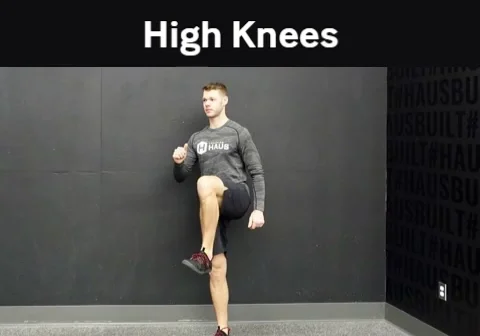
How to Do It:
- Stand with your feet hip-width apart.
- Engage your core and lift one knee toward your chest while swinging the opposite arm forward.
- Quickly alternate legs for 30–45 seconds.
Benefits:
Strengthens core stability
Enhances hip mobility
Improves circulation in lower body muscles
3. Arm Circles
Loosen up your shoulders and upper back while boosting blood flow to your arms.
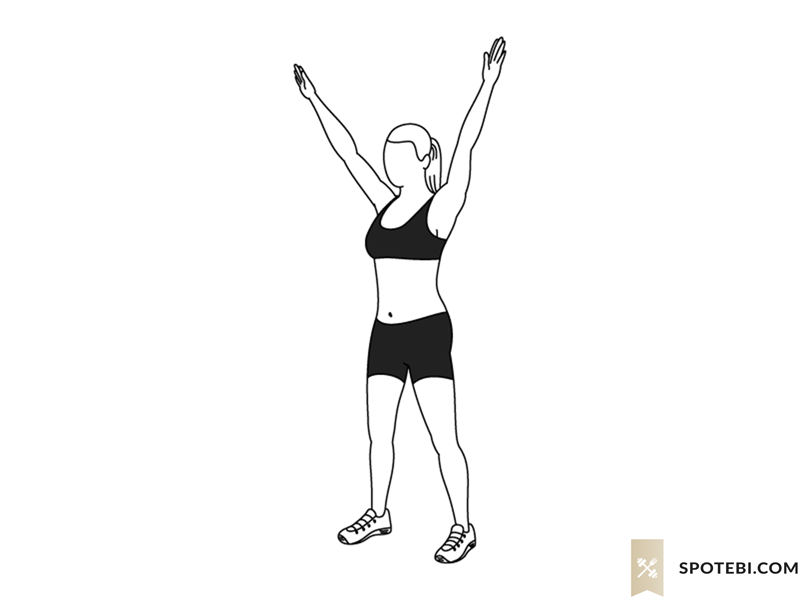
How to Do It:
- Stand with feet shoulder-width apart and arms extended at shoulder height.
- Make small circular motions with your arms, gradually increasing the size.
- Reverse the direction after 15–30 seconds.
Benefits:
Improves shoulder flexibility
Relieves tightness in the chest and back muscles
Increases arm circulation
4. Lunges with a Twist
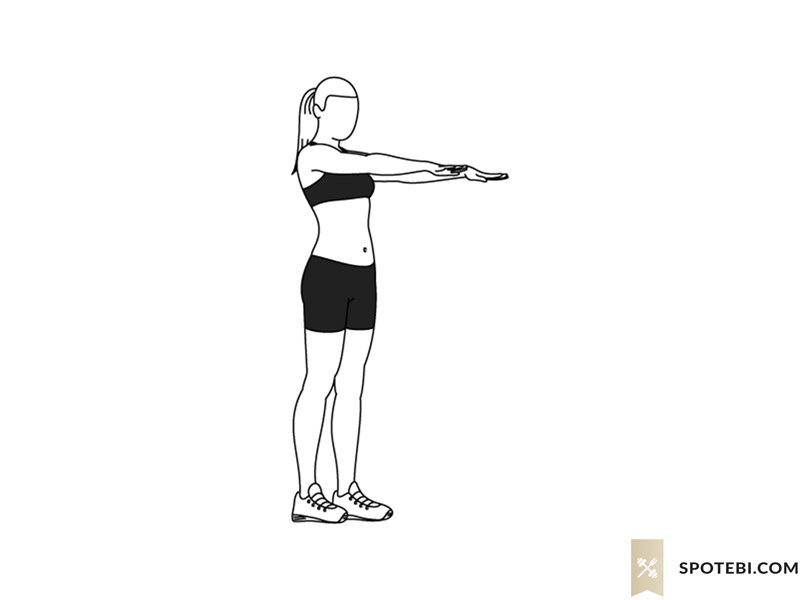
This variation of lunges stretches your core and warms up your hips and legs.
How to Do It:
- Step forward with one leg, bending into a lunge position.
- Twist your torso toward the forward leg to engage your core.
- Step back to the starting position and repeat with the other leg.
Benefits:
Activates quads, hamstrings, and glutes
Improves balance and flexibility
Engages abdominal muscles
5. Butt Kicks
This simple cardio move warms up your hamstrings and boosts blood flow.
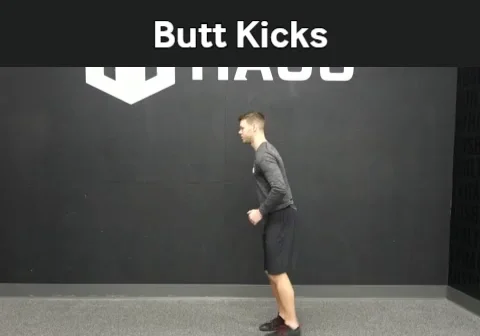
How to Do It:
- Stand tall with feet hip-width apart.
- Alternately lift your heels toward your glutes in a rhythmic motion.
- Continue for 30–45 seconds.
Benefits:
Warms up knee joints
Increases lower body mobility
Prepares muscles for high-intensity workouts
Pro Tips for a Successful Winter Warm-Up
Dress Smart: Use layered, breathable clothing to keep your muscles warm.
Ease Into It: Start at a low intensity and gradually build up.
Focus on Key Areas: Pay extra attention to stiff regions like your lower back, legs, and shoulders.
Listen to Your Body: Don’t rush. Allow enough time for your muscles to loosen up.
Sample 5-Minute Winter Warm-Up
- Jumping Jacks: 1 minute
- High Knees: 1 minute
- Arm Circles: 30 seconds in each direction
- Lunges with a Twist: 10 reps per leg
- Butt Kicks: 1 minute
Final Thoughts
Embracing the chill can be invigorating with the right mindset and preparation. These exercises not only keep your body warm but also set the tone for an energetic workout. What’s your favorite way to warm up in the winter? Share your tips and tricks in the comments!
Some related questions
Exercise can boost your mood at any time of year, but it has a particularly profound effect during winter, sending those all-important feel-good hormones
From Edward R. Laskowski, M.D. Mild to moderate physical activity is usually OK if you have a common cold and no fever. Exercise may even help you feel better by opening your nasal passages and temporarily relieving nasal congestion.
Layer Up
Don’t stop at sweat-wicking clothes for exercise in the winter. You also need layers to trap warm air next to your body and keep out the elements (like rain, snow, and wind), says Brian Calkins, an ACE-certified personal trainer and the president of HealthStyle Fitness in Cincinnati.
A winter bulk offers a strategic opportunity for strength training enthusiasts to optimize muscle growth. The holiday season’s excess calories and opportunities for rest create an ideal environment for a better bulk, supported by scientific evidence
It’s easy to lose motivation to exercise when it’s cold outside. However, you can remain active and exercise safely, especially outdoors, during the winter

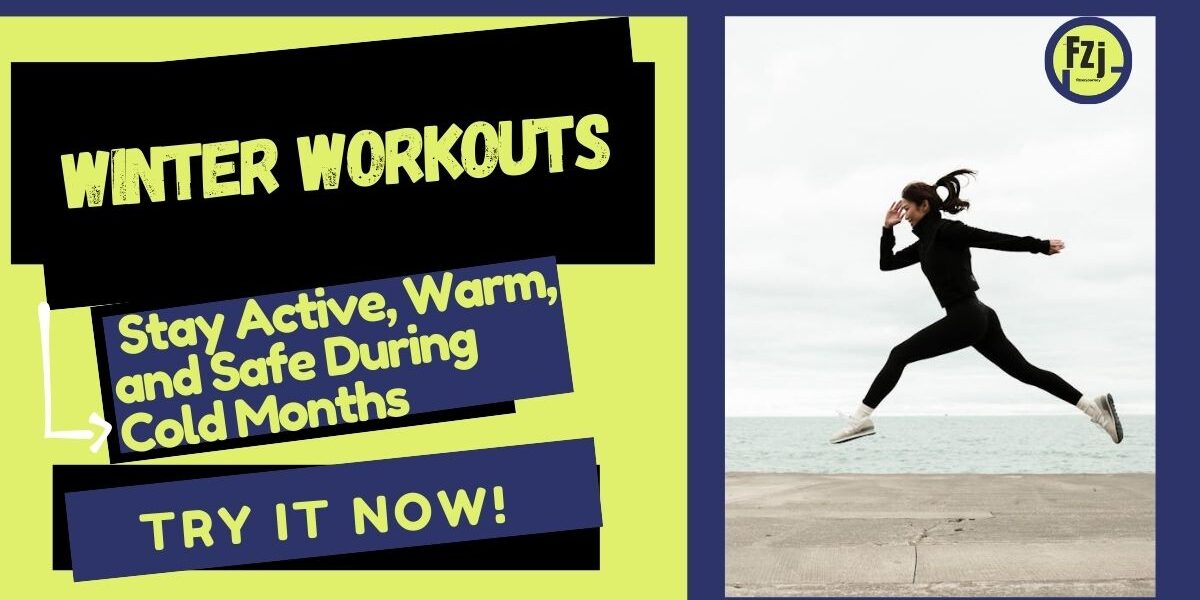



[…] They’re Ideal: These calorie-dense treats generate warmth and are perfect for winter muscle and weight […]